Off-grid power supply of a level measurement system
To the reference report

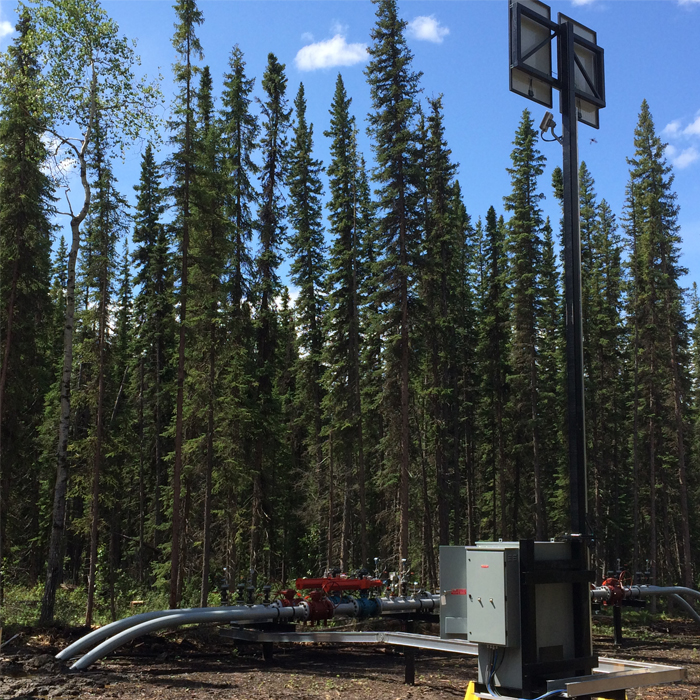
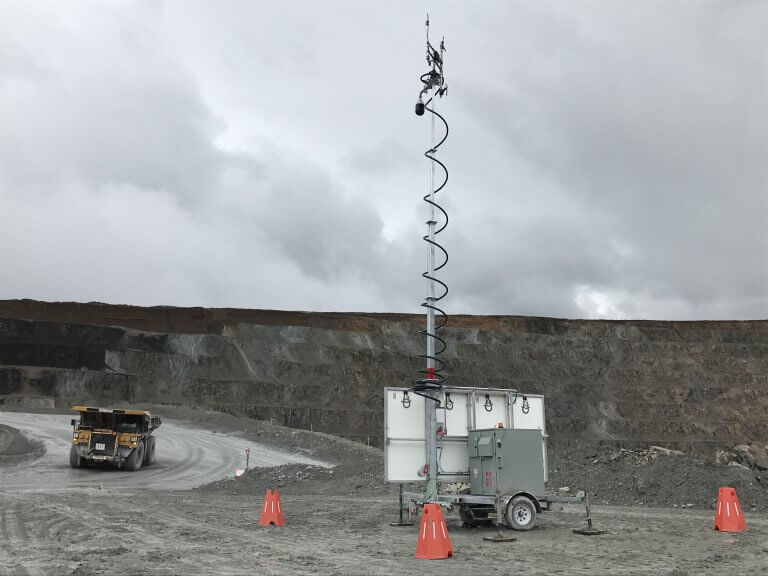
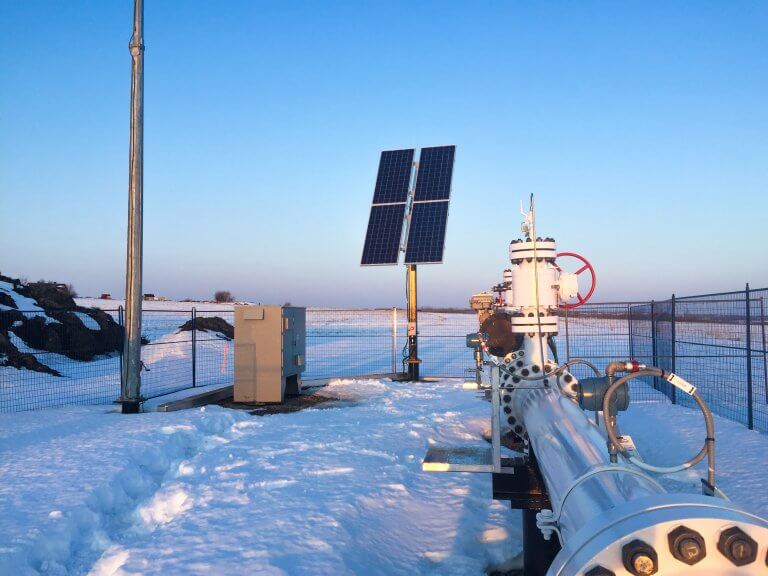
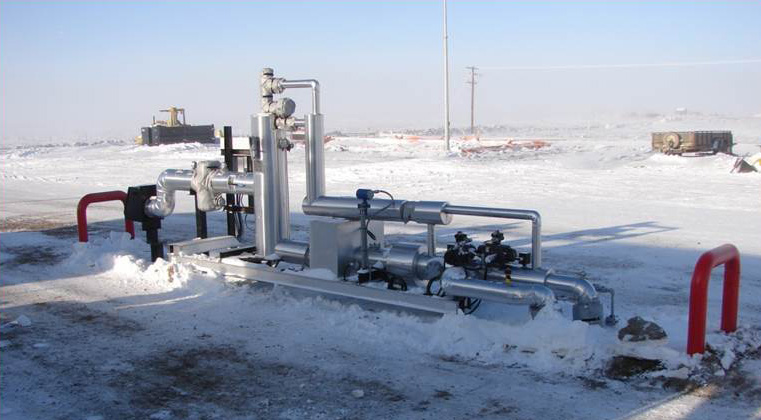
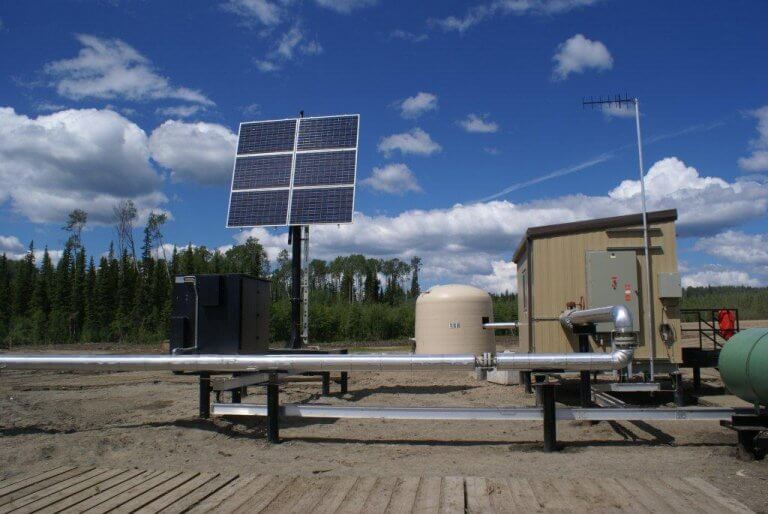
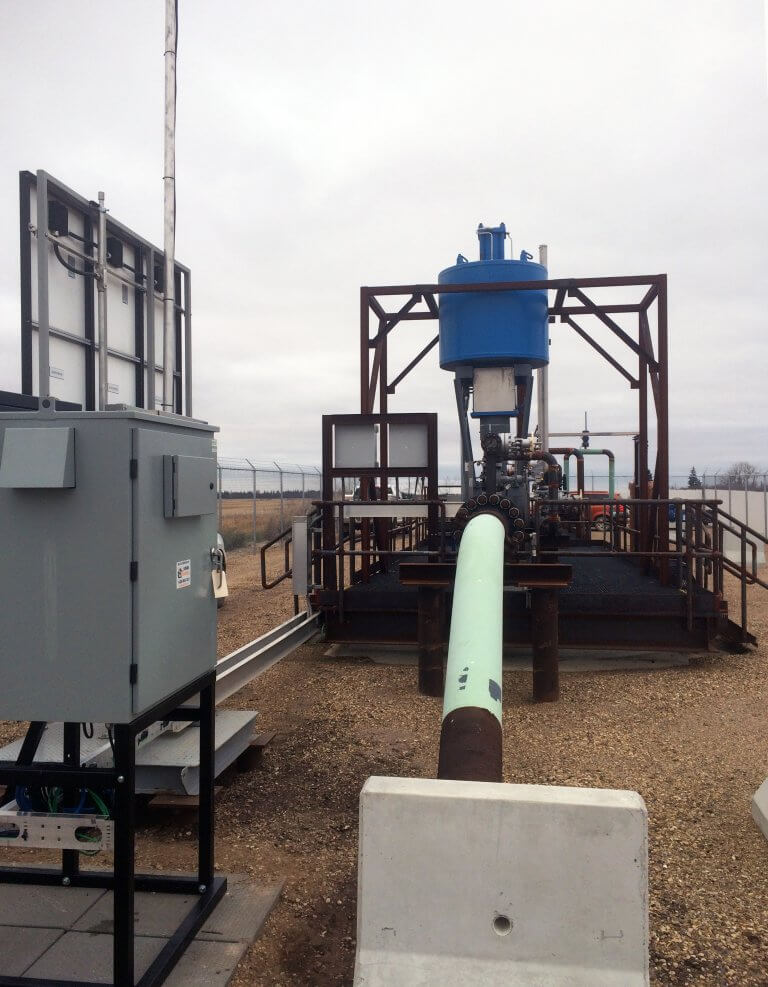
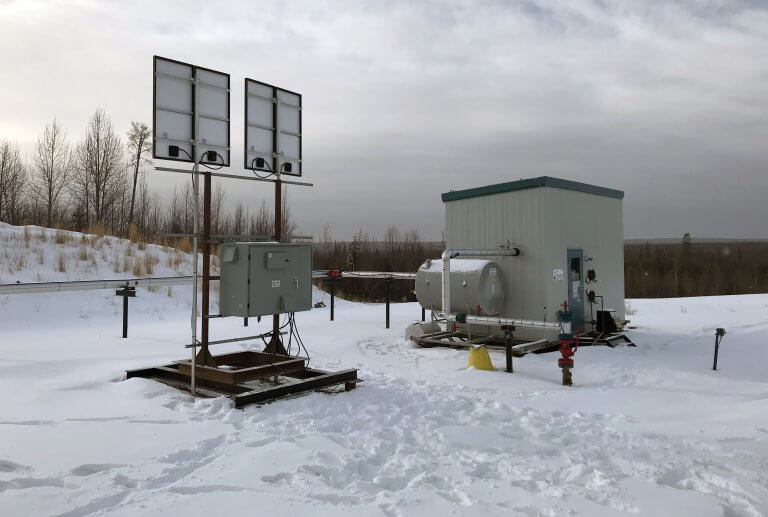
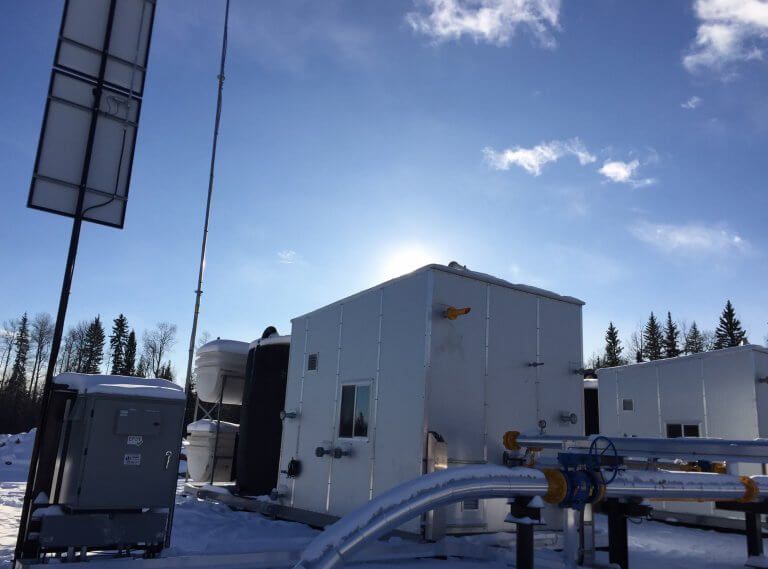
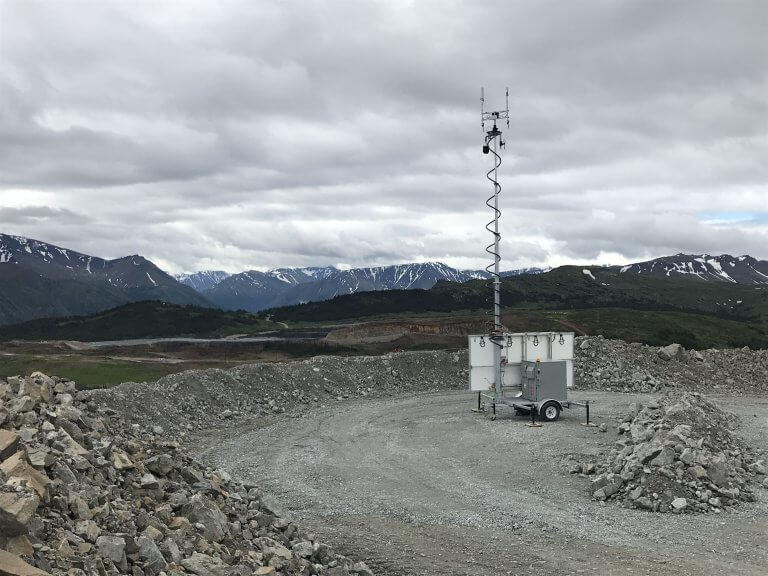
SCADA communications and control equipment enable monitoring and control of production, e.g. of flow rates, liquid levels, valve settings etc.
| Output requirement | Between 5 and 20 W |
| Power requirement | About 120 to 480 Wh/day |
| Autonomy requirement | At least 4 months without user intervention, especially in winter |
One of the biggest challenges is a reliable power supply for 24 hours, in particular in winter, with little sunlight and low temperatures. Interruptions to the power supply that cause system failure and loss of production and, in the worst case scenario, require a repair team on site, should be prevented. Continuing production and a repair team having to re-configure the control software parameters create unnecessarily high costs.
A combination of existing solar modules and batteries with an EFOY Pro 2800 for the reliable and flexible provision of off-grid power, integrated into a relevant housing for dependable operation, even in extreme winter conditions.
Save money and ensure your power supply in any weather at the same time. Properly installed and equipped with sufficient fuel, the EFOY Pro will reliably produce off-grid power in any weather, in any climate and at any time of the year. High production loss costs can therefore be avoided.
“Replacing the fuel cartridge is child’s play”
Once a year, we replace the fuel cartridges in our 3 EFOY units. I had never done this, so I was curious about how the exchange worked. I expected that changing it would be complicated and I would come into contact with methanol.
I was very pleasantly surprised that each canister has a safety valve and that no methanol escapes when the fuel cartridges are replaced, making it extremely easy.
Terry Krushel, Sr. Staff Control Tech - Shell Canada Ltd, (CA)
EFOY energy solutions used worldwide
Used widely in the oil and gas industry for pipeline safety along with numerous other applications, SCADA systems constitute a useful type of control system. They can be used to assist with flow production, batch production and several modern approaches to manufacturing such as lean or agile manufacturing processes. SCADA systems are also used in infrastructure processes, such as water treatment systems and, in some cases, in facilities systems, such as air-conditioning and ventilation. Chemical companies will also often use them as a way to control a chemical injection pump. [1] Given their many benefits, what is SCADA systems current usefulness in industry today? Read on to find out everything you need to know about SCADA systems, their functions and how they operate.
To begin with, any SCADA systems definition should make it clear that what SCADA stands for is supervisory control and data acquisition. [1] In short, SCADA systems are technological solutions that are made up of computers, data communications systems, logic controllers, sensors and graphical user interfaces that aim to control systems and processes in real time. Of course, this means that there are many different types of SCADA systems and, consequently, SCADA systems meaning will vary to an extent depending on the application. What all SCADA systems have in common with one another, however, is that they monitor functional equipment but also interact with such equipment to improve processes.
In other words, SCADA systems don’t simply log data to be checked out later but make decisions – based on their programming – that can affect the throughput of processes as they occur. This is not to say that SCADA systems are always fully automated because human interfaces are common with them, too. That said, they will record events and interventions so that their effectiveness can be checked by engineers down the line. Some SCADA systems are designed for specific industrial locations while others function over several sites and use cloud-based connectivity and servers to function harmoniously.
Simply put, SCADA systems work by collecting data through sensors and other similar devices. This information is passed to a series of computers through standard industrial input-output modules. However, at this point SCADA systems are not much more than mere data loggers. What makes SCADA systems different is that the computers that hold the data provide processor nodes that operators can interact with via human machine interfaces, often based on a touchscreen system. [2]
Through programmable logic controllers, or PLCs, operators can set parameters so that SCADA systems will alter the way production processes are controlled. This way, SCADA systems can be used not only to control processes automatically but to be fine-tuned by human interventions,as well. In some cases, they’ll even shut a machine down completely if there is a safety concern that requires a closer human inspection. Although some of the computers used by human operators are located on the site of where the control system is functioning, modern data communications methods mean that some SCADA systems can hold data remotely. If so, human operators can interface with SCADA systems through what is known as remote terminal units, or RTUs.
There are both advantages and disadvantages of SCADA system technologies. Among some of the challenges that engineers need to come include SCADA system integration with the wrong network protocol stack. [3] Third-party software can also struggle with SCADA systems that are handling thousands of simultaneous event logs, so proprietary systems can be preferable in such cases. In addition, poor engineering practices with SCADA systems, such as not having a fully developed test procedure in place due to budgetary constraints, can cause problems with the future viability of some industrial SCADA systems.
Although they present certain engineering challenges, SCADA systems offer so many advantages that they have continued to be popular since they were first introduced. Among the commercial benefits of SCADA systems is their proven ability to help with proactive maintenance by detecting problems before they occur and taking automated steps to prevent issues from worsening until maintenance procedures can be carried out. [4] By automating controls, RTUs can notify operators of changes to operations, thereby helping to plan for changes in expected output. Detailed reporting is also another benefit to businesses which need to handle complex processes. Furthermore, many systems can integrate well with current control equipment and even legacy data communications networks.
The application of SCADA system technology is very varied. For example, numerous oil and gas SCADA systems make use of well-established SCADA technology to help them function efficiently but also safely. An early pipeline SCADA system dating back to the late 1950s was the forerunner of today’s generation of SCADA technology. [5] Back then, relatively simple telemetry was captured on computers to automate communications concerning flow rates and other measurements. Since then, the utility of SCADA systems has meant numerous other industries have adopted this technology.
A good example is the use of SCADA systems in power distribution networks. Nearly all national electrical networks require constant monitoring to meet total and localised demand. As such, SCADA in power system distribution is now commonplace in the developed world. Equally, SCADA systems are utilised in automated manufacturing settings and even in the fabrication sector. SCADA systems also have a role to play in facilities management. In short, SCADA systems run many building control processes, such as cooling and heating, but can also be found helping airports, cruise ships and even space stations to run numerous facilities, not least energy consumption. [6]
Engineering expertise is a prerequisite to benefit from a successfully SCADA system integration. Turning to a third-party supplier or consultant will be necessary unless these skills are already available in-house. Typically, standard systems are used by manufacturing companies but petrochemical firms may need more specialist systems that are designed from the ground up. Every pipeline SCADA system that is designed today, for example, should be future-proofed against requirements to come as well as meeting current needs. [2]
The answer to this question will depend on the way the SCADA system in question is deployed. For the most part, however, what engineers are looking for in them is data acquisition and processing because without this primary functionality, no software can make smart decisions about how to control a system process. Alarm processing and historical data inspections are also very important functions of SCADA technology, especially in settings where very fine adjustments to processes can have a big commercial outcome, such as in the chemical and petrochemical industries, for instance. There again, some companies prioritise remote control human-machine interfaces, a very big issue with systems that may extend over many miles, such as is the case with pipelines and power networks, of course. [4]
To conclude, the majority of SCADA systems in use today make use of Ethernet connectivity but there are other approaches that can be taken such as Bluetooth and even proprietary wireless communications technologies. Many software developers working with SCADA infrastructures now try to make their data visualisations as clear as possible. This is often because the processes being monitored are now so complex that they need to be broken down for ordinary operatives to be able to interpret them in real-time. Finally, security has become a big issue in this field. Encrypted data and password-protected HMIs and RTUs are now the industry norm. Otherwise, competitors and others would be able to gain valuable information from unprotected SCADA systems in the field.
[1] https://en.wikipedia.org/wiki/SCADA
[2] https://www.onlogic.com/company/io-hub/what-is-a-scada-system-and-how-does-it-work/
[3] https://www.parasyn.com.au/article/the-top-5-problems-with-scada-systems/
[4] https://www.dpstele.com/blog/top-7-benefits-that-a-scada-system-brings-to-your-organization.php
[5] https://inductiveautomation.com/resources/article/what-is-scada
[6] https://en.wikipedia.org/wiki/SCADA#Examples_of_use